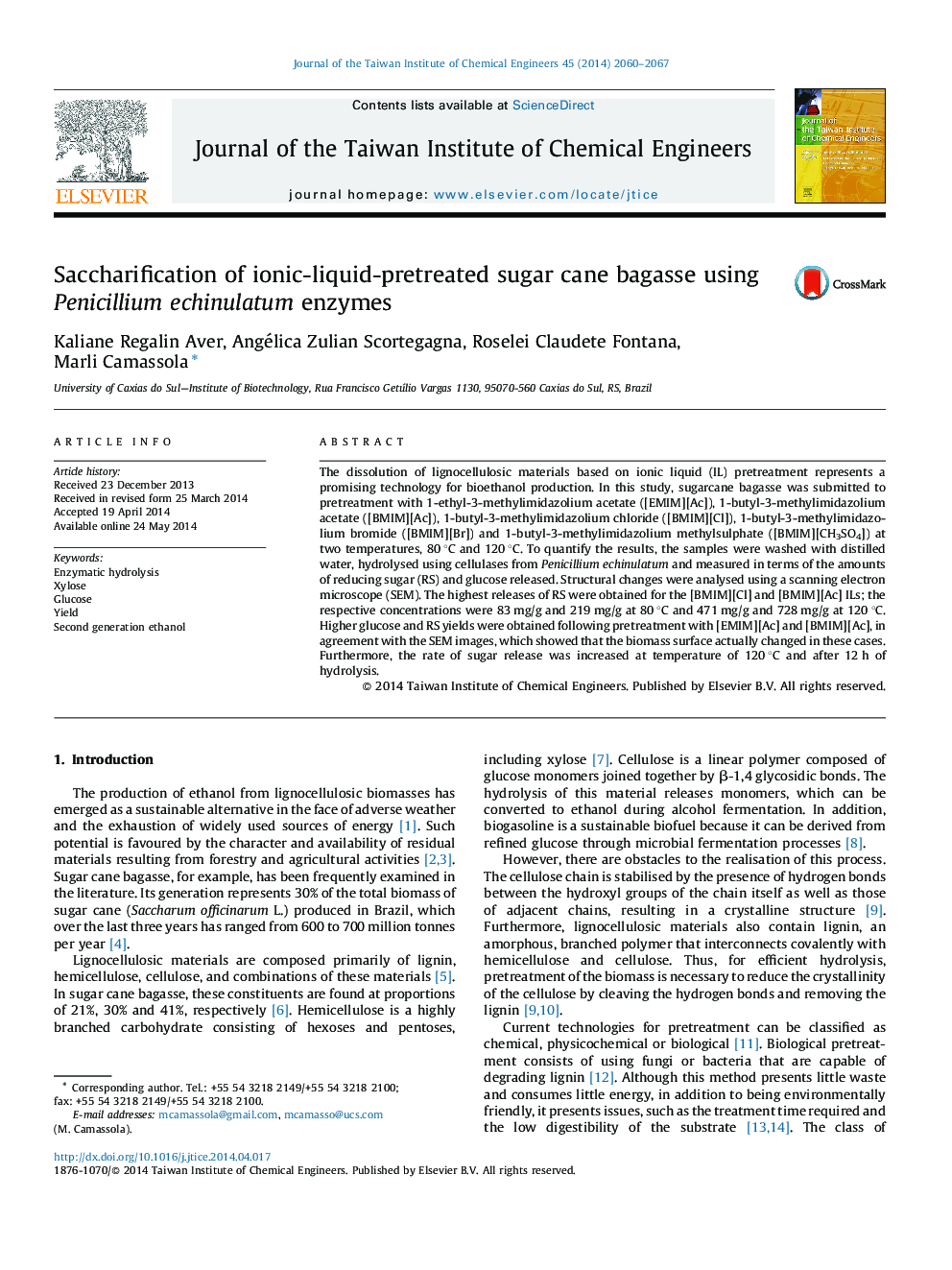| Article ID | Journal | Published Year | Pages | File Type |
|---|---|---|---|---|
| 691464 | Journal of the Taiwan Institute of Chemical Engineers | 2014 | 8 Pages |
•[BMIM][CH3SO4] acts only on the hemicellulose, not acting cellulose.•Enzymes of Penicillium echinulatum have potential to hydrolyse ionic-liquid-pretreated sugar cane bagasse.•[EMIM][Ac] and [BMIM][Ac] showed the best results to pretreat sugar cane bagasse.
The dissolution of lignocellulosic materials based on ionic liquid (IL) pretreatment represents a promising technology for bioethanol production. In this study, sugarcane bagasse was submitted to pretreatment with 1-ethyl-3-methylimidazolium acetate ([EMIM][Ac]), 1-butyl-3-methylimidazolium acetate ([BMIM][Ac]), 1-butyl-3-methylimidazolium chloride ([BMIM][Cl]), 1-butyl-3-methylimidazolium bromide ([BMIM][Br]) and 1-butyl-3-methylimidazolium methylsulphate ([BMIM][CH3SO4]) at two temperatures, 80 °C and 120 °C. To quantify the results, the samples were washed with distilled water, hydrolysed using cellulases from Penicillium echinulatum and measured in terms of the amounts of reducing sugar (RS) and glucose released. Structural changes were analysed using a scanning electron microscope (SEM). The highest releases of RS were obtained for the [BMIM][Cl] and [BMIM][Ac] ILs; the respective concentrations were 83 mg/g and 219 mg/g at 80 °C and 471 mg/g and 728 mg/g at 120 °C. Higher glucose and RS yields were obtained following pretreatment with [EMIM][Ac] and [BMIM][Ac], in agreement with the SEM images, which showed that the biomass surface actually changed in these cases. Furthermore, the rate of sugar release was increased at temperature of 120 °C and after 12 h of hydrolysis.
